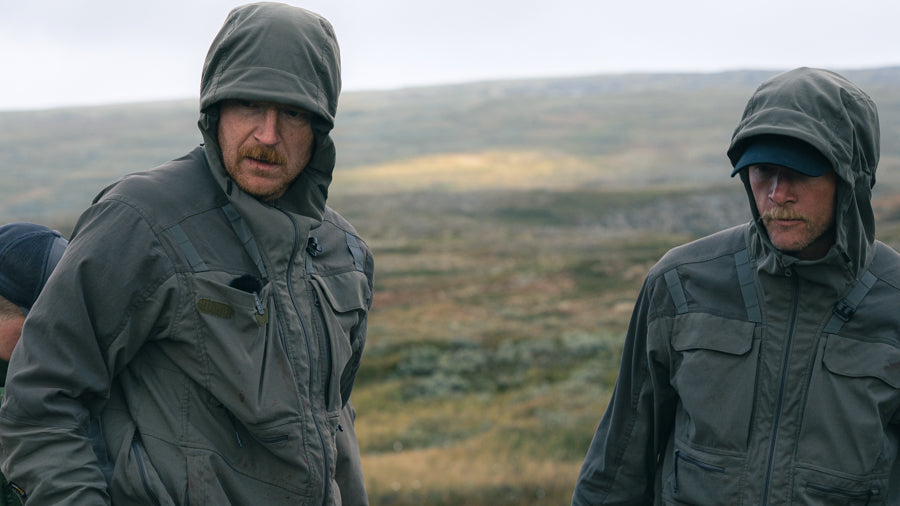
Wild boar hunting
It is possible to hunt wild boar without a dog all year round. But the hunt I intend to describe now usually takes place in the dark hours of the day or in the borderland between light and dark.
I really enjoy hunting wild boar without a dog, even though I love loose dog hunting. Stealth or vigilant hunting gives me other parts of the hunt such as e.g. the calm of nature as the day rests, the challenge of sneaking up on game with excellent senses that are in many ways adapted for dark hours. I also appreciate the opportunity to study and learn the behavior and habits of wild boars when they move freely and do not feel hunted. As well as being able to manage wild boar as a resource by calmly selecting the right individuals and hunting them in selected places.
Wild boar hunting without a dog
Wild boars are, as I wrote earlier, nocturnal, which is why it is advantageous to hunt them with dogs during the day. During the day without a dog, it is difficult to sneak up on or even see a wild boar. They prefer daily in places and in terrain that is inaccessible to many others or that at least gives them shelter and/or cover. To manage to find them in such a place without scaring them away during the attempt is difficult. Their excellent sense of smell, good hearing and their sight warn them long before they are seen and they are also good at, and adapted to, not being seen. Sneaky, vigilant hunting becomes ineffective during the day due to the above. However, wild boars can be active at dawn and dusk. So at dawn/dusk I usually either watch or sneak in places or areas where I have reason to believe wild boars will pass or reside and where it is possible for me to see and detect them.
Such places can be e.g. switches -paths, paths, passages where they move. On the way to or from feeding places, i.e. where it is arranged, laid out forage to attract or feed wild boar. Feeding places, which can be under fruit trees, oaks and beech trees, in fields, in reeds, on dykes, places that have recently been dug, e.g. forest slopes. Most feeding grounds are more or less seasonal, and understanding and experience of the area in which one hunts helps in the assessment of places of interest. As omnivorous opportunists, wild boars are not always easy to predict. But if you have a little knowledge of the ground, you can be helped by track snow or bank damage to simply see how they have recently moved and where they seem to be staying. In addition, there is predictability which can be a help if there is currently a lot of fall fruit, milking grain, frost that has been released, or anything else that can help you in choosing a place or area.

My hunt for wild boar through a year
From October 1, I devote myself almost exclusively to loose dog hunting when it comes to wild boar. When the stray dog hunt is over in February, partly my own recovery from the dog hunting season and other hunting that attracts me usually keeps me abstinent. So I usually only get started in March. In March/April, it depends on the weather and the cold how and how much I hunt, but regardless, I start looking over feeding sites, inventorying the ground to see where wild boar have moved the most and trying to figure out what seems most interesting to them at the moment. What I'm waiting for is the time when the frost lets up because my experience is that that's when the fields where I hunt start to get damaged. The feedlots are then, for my part, to offer attractive alternatives to the cultivated land and between March and somewhere after harvest, I don't like to disturb on or near the feedlot.
Instead, dykes, clearings, and in my case, grain fields offer good visibility and conditions for stealth and vigilance, in addition it gives an opportunity to keep down the damage to agriculture. In May the same opportunities continue but in June I have experienced that the wild boar activity reduced to agriculture and pasture and made assumptions that there is greater variety and availability of other food that attracts.
On the other hand, at the end of June/beginning of July, when the wheat turns into milk, i.e. ripens to the point that it tastes sweet, the grain hunt really picks up. The wild boars are now drawn to the grain and can be quite shy when they want to get at it. Then I rarely devote myself to sneaking or watching anything other than the fields. Partly because it is exciting and challenging, but also because, in my case, the landowner will be happy if I scare the wild boar away from the crops, which I like to do, not infrequently through unsuccessful sneaks or





Alexander Olsson
January 19, 2023
Bra grejer!
Nice läsning!
Ska ut och smyga lite på svin imorgon eftermiddag, väl inspirerad.
Simma lugnt!